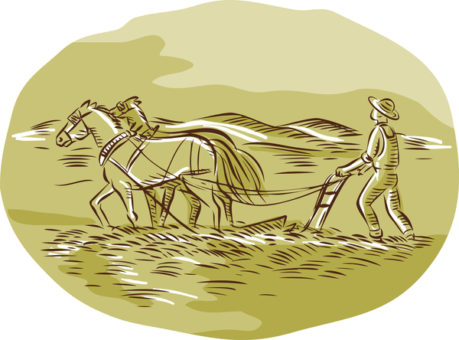History Class: It’s About the People, Not the Dates
A MiddleWeb Blog

There are a lot of reasons why I became a history teacher and many more reasons why I continue to be one, but at least one of them has to do with being fascinated by the people of the past.
A few summers ago, I was lucky enough to be in New York City by myself and took that opportunity (without the kids whining, “do we have to?”) to visit the birthplace of Theodore Roosevelt. Located on a side street right between Park Avenue and Broadway in Gramercy Park, it is actually a rebuild of the home, based on the design of the identical house next to it.
I have a minor obsession with the entire Roosevelt family and so seeing the recreated rooms where “Teedie” grew up just thrilled me – the little red velvet stool his parents bought him because the black horsehair couch was too scratchy for him to sit on and indulge his love of reading in the family’s library; the wallpaper in the bedroom that reflected the family’s love of the outdoors; the “gym” on the fire escape where Teedie followed his father’s advice to “remake his body.”
I share some of my photographs of this with my students partly to indulge my own fascination, but I also have an agenda: the intersection of history and biography. Because students should know that a pampered, weakling, asthmatic young boy would grow up to be president of the United States. Because Roosevelt was a reader, and reading matters. Because Roosevelt’s love of the outdoors led him to protect wilderness areas, and wilderness matters.
Telling people’s stories helps bring history alive for us
I also share this to remind my students that famous people had mothers and fathers and childhoods. Offering a few stories about people’s past lives keeps things “real.” We are not just teaching them mythologies and romance and pageantry. History is complicated and messy and the actors are real people with real problems.
All the famous characters had key moments in their childhood or early adulthood that helped shape who they became. Tell students about those moments. Or have students find them on their own through research. And, like Theodore Roosevelt, every historic figure is flawed, because humans all have flaws. Teach students about these flaws which humanize even our most beloved heroes.
This is why Hamilton and historical movies like Glory, Selma and Lincoln are so popular. But don’t just focus on the Hamiltons, Lincolns, and Martin Luther Kings. Tell students stories about some of the lesser known characters in U.S. history such as Denmark Vesey, Angelina Grimke, Rose Schneiderman and A. Philip Randolph.
Every period has some overlooked actor who was vitally significant. I have always devoted a lesson to Ida B. Wells and her role as a muckraking journalist who delved into the problem of lynching. Imagine my delight when this year, the City of Chicago renamed a MAJOR street, Congress Boulevard, in honor of Ida B. Wells!
I now hope that when my students head downtown and see the signs to exit for Ida B. Wells Drive (it’s very prominent), they will remember something of how her own experiences led this remarkable early black newspaperwoman to fight against injustice and racism.
But even as you devote lessons or parts of lessons to famous Americans, remember that there are also thousands of other Americans who made their mark on history without being remembered by name. I like to share the proverb below with students to teach this concept:
“Until the lions have their own historians, the history of the hunt will always glorify the hunter.” — African proverb
Early in the year I explain to them the meaning of the phrase “e pluribus unum” that is on our currency, and I use that phrase to explain that the history is also about the “lions.” The workers at Lowell, the soldiers who fought in the Civil War, the Chinese who built the transcontinental railroad, the Americans who lived through the Great Depression, the men who landed at the Normandy beaches – all the experiences of all these people (the pluribus) make up our one nation.
Archetypes
Good history teaches about exceptions to the rule and diversity of experience, but at the middle school level (or any level, now that I think about it), archetypes are important to an understanding of historical periods and events.
For a few years I have been using a clip from Ken Burns’s series, The West, about a farmer from Nebraska named Uriah Oblinger. It is a lovely, less than 10-minute clip that manages to create empathy with farmers on the plains. During the year, I found myself alluding to over and over again. “Remember Uriah Oblinger?” I’d ask my students when we discussed what the American dream entailed.
When we get into intense discussions about what happened to the Plains Indians, my students want to condemn the United States government. And then I remind them of the Uriah Oblingers – are they at fault too? Remembering how they felt for Uriah, and the untimely death of his young wife, they begin to understand the complications of history.
So here’s an idea for something productive you can do this summer. For each unit you teach, come up with one or two historic figures. Do a little research on each one. Find a magazine article about them online, or read a chapter in a book, or a whole biography. Jot down a few interesting facts about each of these people.
Plug this material into your lessons to help the history come alive a bit more. Commit to focusing on a wide array of historical actors, not just the big guys (and not just guys). Think of archetypes: can you create a lesson or find a reading or a film clip about a worker, a protester, a soldier, a random American who had opinions about the war in Vietnam?
And remind students that they, too, are actors in history.
It’s not just about the causes of the Civil War, the reasons for industrial growth, the programs of the New Deal; it’s about lives lived and how Americans felt about the events they lived through that enrich what we teach and make it meaningful.
Some sources for examples of history’s “real people”
- Biography.com has good resources, including brief videos (There are two excellent ones I use on Ida B. Wells.)
- American National Biography – what a resource! I suggest you read the letter from the editor to get the scope of what this site has. It also has a partnership with the Smithsonian National Portrait Gallery.
- Many of the Ken Burns videos have good clips on “archetypes.” For example, in his World War II series, I love the clip on Pearl Harbor that has people describing their reactions (including the famous: Sen. Daniel Inouye) and an especially poignant clip from a Japanese American woman describing feeling awareness of her ethnicity for the first time. It is hard to get some of the clips online, as there are copyright issues. But PBS has some. The ones on YouTube are sometimes there for awhile and get taken down.
- The Miller Center is a fabulous site for background on U.S. presidents.
- Many famous folk have birthplace or homes that are open to the public. There are usually websites associated with them that have good info. (See for example Harriet Beecher Stowe or Frederick Douglass’s birthplace.)
Instead of just entering a person’s name in a search engine online, try adding the word “museum” or “exhibit” after the name. This will sometimes result in museum exhibits about the person that will provide you a wealth of resources beyond what you would find with just a search for the name alone.
If you have some favorite sources for history’s archetypes or for real people leading unsung lives, please share here!







































As the author of more than two dozen children’s nonfiction books, including many biographies and many books about historical topics, I fully agree with the idea of focusing on the stories that make history come alive. Whenever I speak with elementary and middle school students about writing nonfiction, I always describe how I look for quotes, stories, and fun facts that illuminate the topic I am covering. I also love the idea of bringing to light lesser-known people and events in history. Great article, Lauren!
Thanks so much for your comment!
Fantastic advice on an approach to teaching History that students will engage with, remember, and – – dare I say it? – – love.
I had a former student tell me I’m the only reason he liked history. I had to disagree; all I did was not use outdated instructional methodology that makes students hate history, which is really just a branch of storytelling, which EVERYONE loves!
Lauren, sounds like you are probably guilty of being the “only reason” your students like history, too!